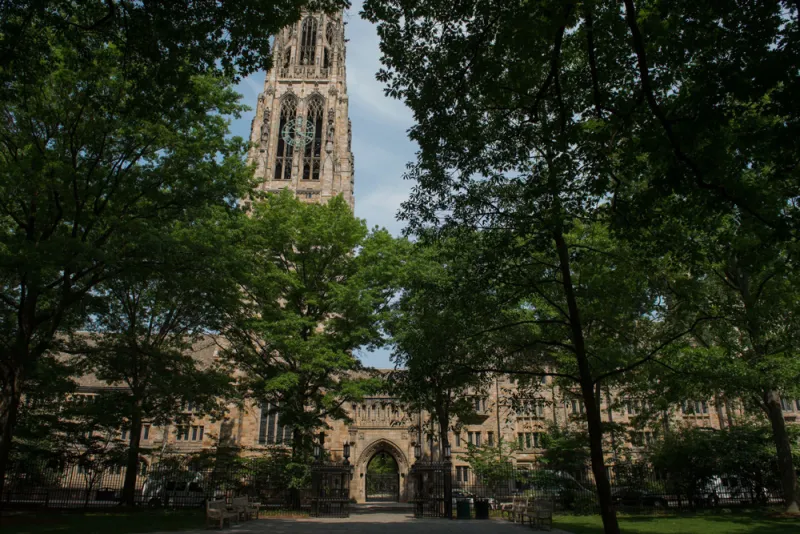Ivy League endowments’ outsize investments in private markets failed to push portfolio returns beyond middling in fiscal 2019.
With huge allocations to private markets, Ivy League endowments aren’t keeping up with a simple U.S. portfolio of stocks and bonds. But they’re not all benefiting from their large allocations to private equity, venture capital and other private market investments either, according to a returns-based analysis by Markov Processes International, a quantitative investment research and analytics firm focused on the asset and wealth management industry. MPI published its annual Ivy League endowment performance analysis for the latest fiscal year, Measuring the Ivy 2019: Decoding the Performance Gap, on Tuesday.
Ivy League endowments are hurting on two fronts. Last year every Ivy endowment except for Brown University underperformed a simple domestic portfolio with 60 percent stocks and 40 percent in bonds, according to MPI. When the Ivies underperformed a 60-40 portfolio in 2016 and 2012, their private market assets were to blame, MPI said. Private equity, venture and other alternatives performed similarly to or lagged stocks and bonds in those two years.
Fiscal 2019, however, was a strong one for private equity and venture, returning 13.8 percent and 21.9 percent, respectively, in the twelve months through June, according to Cambridge Associates’ U.S. Private Equity and Venture Capital indices.
Public asset classes had a solid year, too. The Standard & Poor’s 500 stock index returned 10.4 percent in the year through June while the Bloomberg Barclays U.S. Aggregate Bond Index returned 7.9 percent. All Ivies, except for Brown’s 12.4 percent return, significantly underperformed a market capitalization-weighted domestic 60-40 portfolio’s performance of 9.9 percent in fiscal 2019.
The domestic 60-40 portfolio is comprised of 60 percent in the S&P 500 Index and 40 percent in the Bloomberg Barclays U.S. Aggregate Bond Index, rebalanced quarterly. The average Ivy returned 6.7 percent in fiscal 2019.
[II Deep Dive: David Swensen Is Great for Yale. Is He Horrible for Investing?]
“Even in the absence of considerable allocations to U.S. public equities and bonds, both of which had a solid year, the seeming inability of elite endowments’ large exposures to private markets to push portfolio returns beyond their middling figures in fiscal 2019 is noteworthy, and tells of the challenges in getting PE and VC investing right, consistently,” said report co-author Megan Woods, director of quantitative research at MPI, in a statement on the study.
“The range of outcomes of PE funds makes it very difficult to underestimate the risk in private equity relative to just looking at average returns shown by an index,” she said. “In many years, more than 25 percent of funds have negative returns, even though the index may register a positive return in the double digits.”
MPI also reported that in fiscal 2019, the range of returns of individual endowments was wider than usual. Brown was at the high end with a 12.4 percent return and Columbia University was at the low end with a 3.8 percent return. It was the second widest dispersion of returns in the past decade, according to the firm. The differences between the best managers of private assets and the bottom managers is far wider than in other asset classes.
The research firm stressed that the range of potential outcomes of private market investments in any particular year is actually two- to three-times greater than for U.S. equity mutual funds. “Such dispersion in private market returns could explain both the lackluster returns of most Ivies as well as the wide range of results in FY2019,” according to MPI’s report.
According to MPI and consistent with its previous studies, Yale University and Princeton University “appear to have the highest exposure estimates to private equity and venture capital strategies,” while Harvard University, University of Pennsylvania, and Columbia have “some of the highest exposures to absolute return strategies, or hedge funds.” The research and analytics firm determined that all of the Ivy League endowments have more than half of their portfolios invested in real assets, private equity, which includes venture capital, and hedge funds. In fact, most of the Ivies have more than two thirds in these asset classes and investment pools, according to MPI.
Winners and losers in the endowment world also changed.
Over the last 10 calendar years, Yale, Princeton University and Dartmouth College tended to be in the top half of Ivy endowments based on performance, while Harvard and Cornell University, “both of which are in the midst of multi-year restructuring, tended to be near the bottom,” according to MPI’s most recent report. “Those tendencies shifted in 2019 as Princeton and Yale give ground to Harvard and Brown.”
The report offers “a cautionary tale,” according to Michael Markov, co-author and chief executive officer at MPI. “Investors, both institutional and retail, are seeking greater access to the private market opportunity set – however, even the most sophisticated investors with access to elite managers aren’t immune from potential performance downturns and can suffer in a year that was, on average, good for private markets,” Markov said in the statement on the study.







